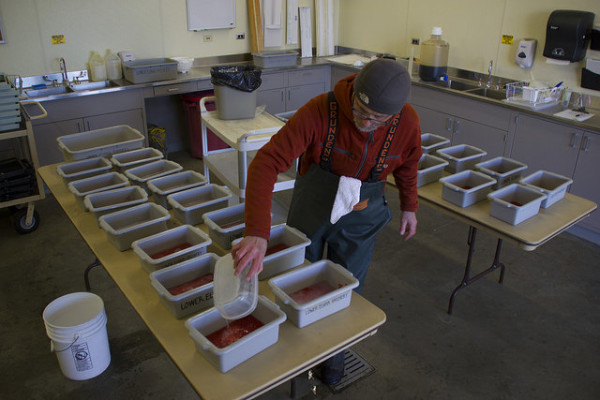
by Northwest Indian Fisheries Commission
Treaty Indian Tribes in western Washington released more than 40 million hatchery salmon in 2014 according to recently compiled statistics.
Of the 40 million salmon released, 13.7 million were chinook. Significant numbers of chum (16.9 million) and coho (8.6 million) were also released in addition to 658,00 steelhead and 456,000 sockeye. Some of the salmon released by the tribes were produced in cooperation with the state Department of Fish and Wildlife, U.S. Fish and Wildlife Service, state regional enhancement groups, or other sport or community groups.
Nearly all of the chinook and coho salmon produced at tribal hatcheries were “mass marked” by removal of the adipose fin — a fleshy extremity just behind the dorsal fin on the fish’s back. Clipping the fin makes for easy identification when the hatchery fish return as adults and are harvested. Many of the fish also received a tiny coded wire tag that identifies their hatchery of origin and is used to determine migration patterns, contribution rates to various fisheries and other information important to fisheries management.
You can view the data behind these salmon releases in the map below. By clicking on each circle, you can view more detailed release data:
